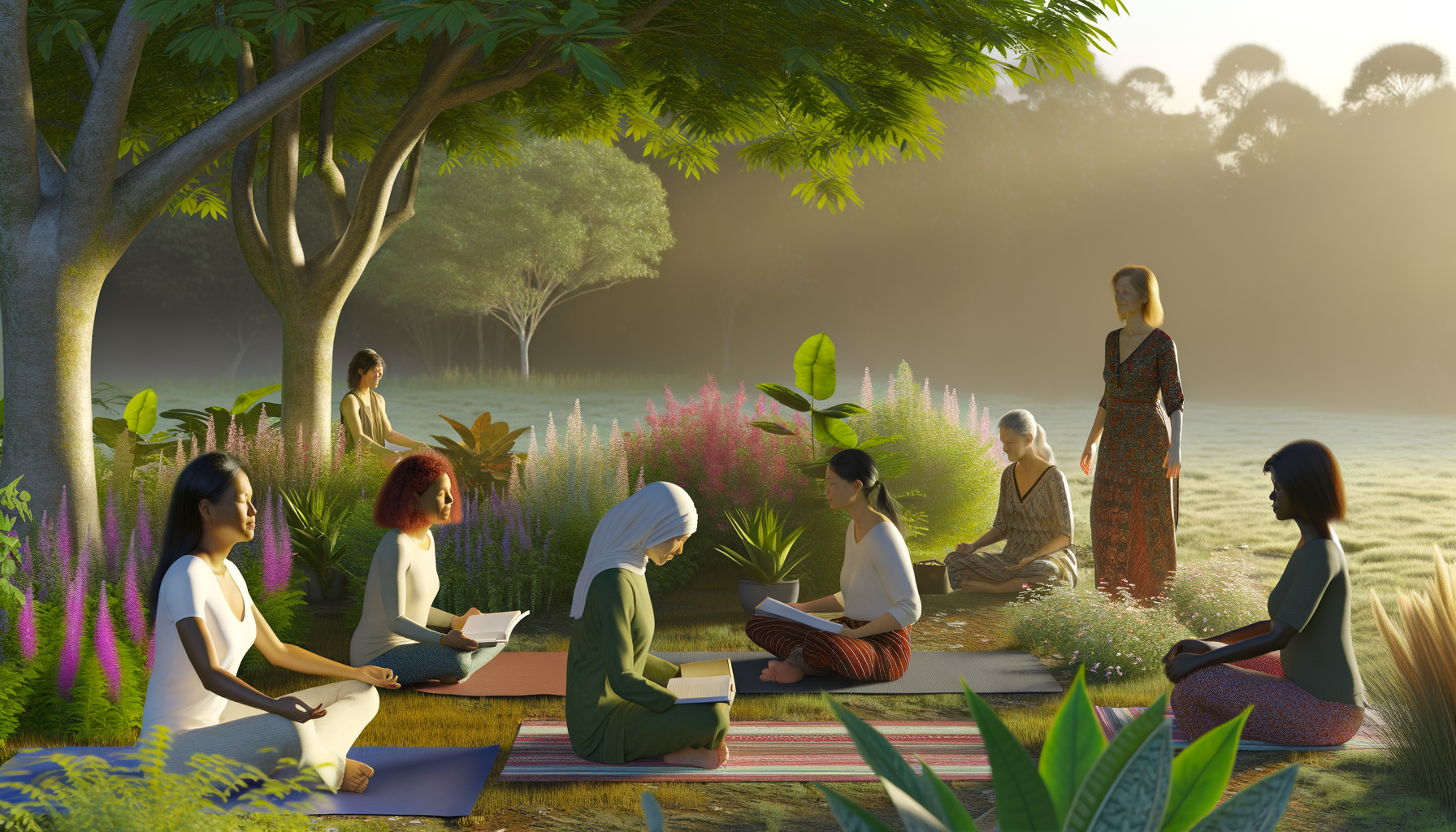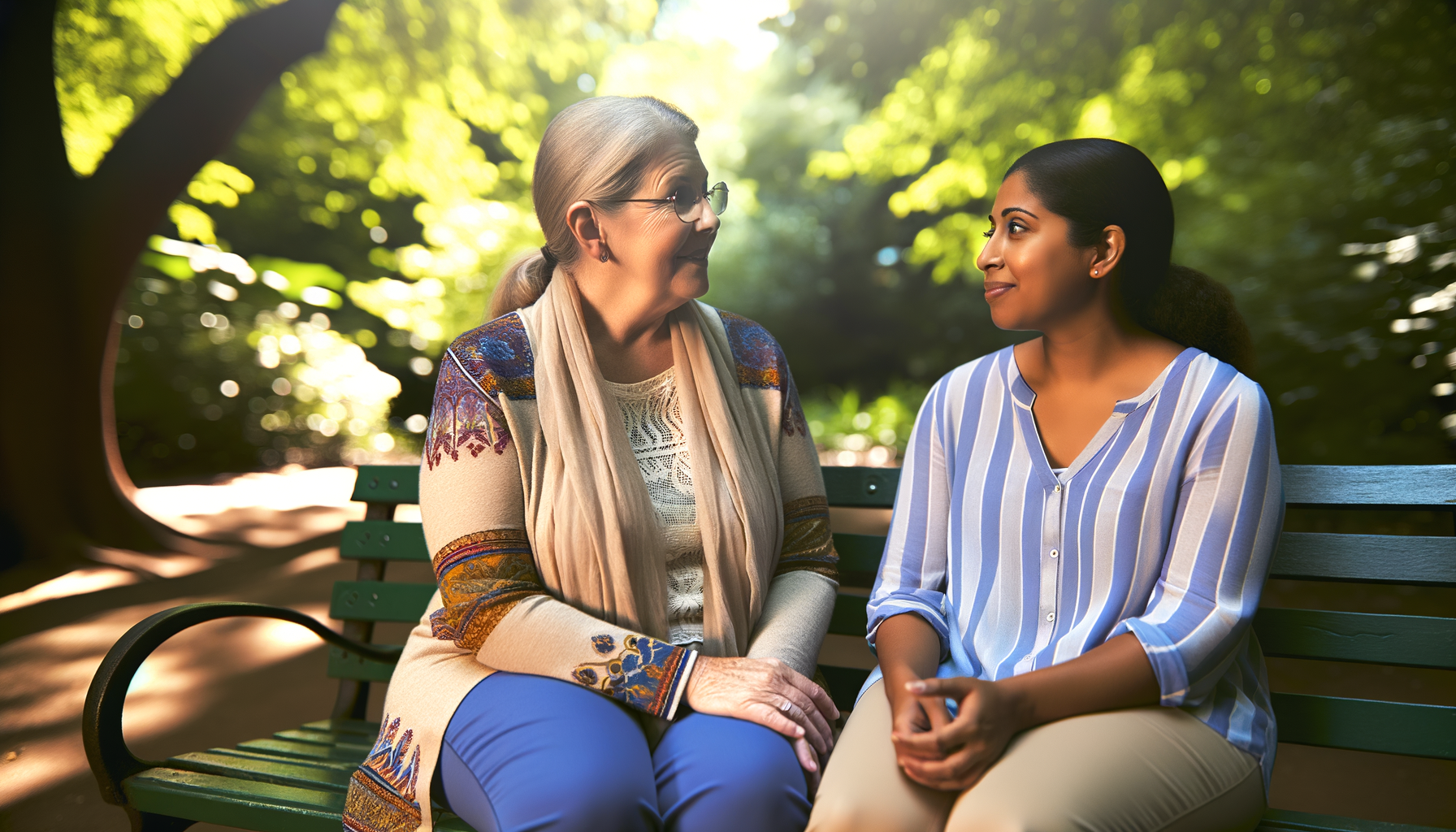
Introduction to Ancient Wisdom
The Timeless Appeal of Ancient Texts
Throughout history, ancient texts have captivated the human imagination. These documents, rich with spiritual insights and philosophical musings, have stood the test of time, offering guidance and solace to generations. Their timeless appeal lies in the profound wisdom they contain, wisdom that transcends the era of their creation and resonates with the core of human experience. From the Vedas and Upanishads of the East to the philosophical treatises of the Greek and Roman thinkers, these texts serve as beacons that continue to illuminate the path for seekers of truth.
Relevance in the Modern World
In an age dominated by technology and rapid change, one might question the relevance of ancient spiritual teachings in the modern world. Yet, it is precisely in these times of uncertainty that the universal truths found in these texts prove most valuable. They offer insights into the human condition, providing tools for navigating the complexities of life with grace and equanimity. The principles of karma, the pursuit of enlightenment, and the interconnectedness of all life are just as applicable today as they were millennia ago, guiding individuals toward a life of purpose and fulfillment.
Understanding the Context of Spiritual Teachings
To fully appreciate the depth of ancient wisdom, one must understand the context in which these teachings were developed. The cultural, historical, and geographical landscapes that shaped these texts are integral to their interpretation. Recognizing the allegorical nature of many spiritual stories and the symbolic language used by ancient sages allows modern readers to extract relevant lessons without being bound by the literalism that can obscure their true meaning.
The Universal Search for Meaning
The quest for meaning is a universal human endeavor. Across cultures and throughout history, individuals have sought to understand their place in the cosmos and the purpose of their existence. Ancient texts serve as a testament to this universal search for meaning, offering diverse perspectives and insights. Whether it is through the exploration of the soul’s journey, the nature of suffering and joy, or the ethical frameworks for living a virtuous life, these teachings provide a rich tapestry from which every seeker can draw.
In conclusion, the wisdom of ancient texts remains a powerful source of inspiration and guidance. As we continue to navigate the challenges of the modern era, these teachings offer a wellspring of knowledge that can help us lead more meaningful and enlightened lives.
Exploring Diverse Traditions
Wisdom from the East: Vedas and Upanishads
The spiritual heritage of the East is rich with ancient texts, among which the Vedas and Upanishads stand out as foundational scriptures of Hindu philosophy. The Vedas, composed in Sanskrit, are a collection of hymns, rituals, and ceremonies that articulate the religious practices of ancient India. They are considered apauruṣeya, meaning not of man, divine in origin. The Upanishads, often referred to as Vedanta, delve deeper into the metaphysical questions of the universe, exploring the nature of reality, the self, and the ultimate truth, Brahman. These texts offer profound insights into the interconnectedness of life and the pursuit of spiritual liberation, moksha.
Teachings of the Middle East: The Torah and Quran
The Middle East has given the world the monotheistic religions of Judaism and Islam, with their respective sacred texts, the Torah and the Quran. The Torah, the first five books of the Hebrew Bible, is the cornerstone of Jewish law and ethics, detailing the covenant between God and the people of Israel. It encompasses a wide range of teachings, from historical narratives to commandments and guidelines for social justice. The Quran, believed by Muslims to be the word of God as revealed to the Prophet Muhammad, offers guidance on every aspect of life and emphasizes the importance of compassion, community, and moral rectitude.
Philosophies of the West: Greek and Roman Texts
Greek and Roman philosophies have profoundly influenced Western thought. Texts from philosophers like Plato, Aristotle, and Seneca explore themes of virtue, the good life, and the nature of knowledge. Plato’s dialogues, for instance, seek to understand justice and the ideal state, while Aristotle’s works lay the groundwork for ethics and metaphysics. Roman Stoic texts, such as those by Marcus Aurelius, teach the value of self-control and rationality in the face of life’s adversities, promoting an inner peace that aligns well with today’s quest for balance and harmony.
Indigenous Knowledge: Shamanic and Tribal Lore
Indigenous cultures around the world possess a vast repository of spiritual wisdom, often transmitted orally through stories and rituals. Shamanic traditions, found in places from Siberia to the Amazon, focus on the deep connection between humans and nature, and the role of the shaman as a mediator between the physical and spiritual worlds. Tribal lore, rich in myths and legends, offers insights into the communal living, respect for the environment, and the cyclical view of existence. These ancient teachings remind us of the importance of living in harmony with the earth and all its inhabitants.
Common Themes in Spiritual Teachings
The Concept of the Soul or Spirit
The soul or spirit is a central concept in many ancient spiritual traditions. It represents the eternal and true essence of a being, distinct from the physical body. In Hinduism, the Atman is seen as the individual soul and part of the universal Brahman, suggesting an underlying unity among all living things. Similarly, in Abrahamic religions, the soul is considered immortal and is judged for its earthly deeds in the afterlife. This belief underscores the intrinsic value of each individual and the profound connection between the material and the spiritual realms.
Understanding Suffering and Joy
Suffering and joy are universal human experiences, and ancient texts offer insights into their nature and purpose. The Buddhist Four Noble Truths, for example, teach that suffering arises from attachment and that liberation from suffering is possible through the Eightfold Path. In Christianity, suffering is often seen as a test of faith or a means to spiritual growth. Joy, on the other hand, is portrayed as a divine gift and a glimpse of the eternal bliss that awaits the faithful. These teachings encourage seekers to find deeper meaning in their experiences and to cultivate a balanced perspective on life’s highs and lows.
The Role of Ethics and Morality
Ethics and morality are foundational to spiritual teachings, providing a framework for how individuals should conduct themselves. The concept of karma in Eastern philosophies emphasizes the consequences of one’s actions, promoting ethical behavior. The Ten Commandments in Judaism and Christianity, and the Sharia in Islam, offer moral guidelines to help believers live in harmony with divine will. These ethical codes foster a sense of responsibility and community, guiding seekers towards actions that uplift both themselves and others.
The Pursuit of Enlightenment or Salvation
The pursuit of enlightenment or salvation is a common theme that motivates many spiritual journeys. In Dharmic religions, enlightenment is the ultimate goal, representing liberation from the cycle of rebirth and the realization of one’s true nature. In Christianity, salvation through faith in Jesus Christ promises eternal life and reconciliation with God. These paths, though diverse in their approach, share the aim of transcending the limitations of the mundane world and achieving a state of higher existence.
The Interconnectedness of All Life
A profound respect for the interconnectedness of all life is a recurring theme in ancient spiritual texts. This principle is vividly illustrated in the Indigenous concept of mitakuye oyasin, which means “all my relations,” reflecting a deep kinship with all forms of life. The idea that “we are all one” resonates through the Vedantic philosophy of non-duality, where individual consciousness is part of a larger, universal consciousness. By recognizing the interdependence of all beings, these teachings inspire a sense of unity and compassion towards the entire web of life.
Practical Wisdom for Daily Living
Mindfulness and Presence
In the rush of modern life, the ancient practice of mindfulness has become a vital tool for maintaining mental and emotional well-being. Mindfulness, a concept deeply rooted in Eastern traditions like Buddhism, teaches us to anchor ourselves in the present moment. By focusing on our breath or the sensations in our bodies, we can observe our thoughts and feelings without judgment. This practice encourages a state of awareness that helps us respond to life’s challenges with clarity and calmness, rather than reacting impulsively.
Compassion and Empathy in Relationships
Time-honored texts emphasize the importance of compassion and empathy in fostering healthy relationships. Whether it’s the selfless love described in the Bhagavad Gita or the Golden Rule found in many spiritual traditions, these teachings remind us to treat others with kindness and understanding. By putting ourselves in another’s shoes, we can build connections that are both deep and enduring. Compassion becomes a bridge to mutual respect and love, creating a ripple effect that enhances our interactions and nurtures our communal spirit.
Coping with Change and Uncertainty
Change is a constant in life, yet it often brings uncertainty that can be unsettling. Ancient wisdom, such as the Stoic teachings of Epictetus, encourages us to distinguish between what is within our control and what is not. By focusing our energy on our own actions and attitudes, we can find inner peace amidst external chaos. This stoic approach to life helps us to embrace change as an opportunity for growth and to maintain a sense of stability when faced with life’s inevitable fluctuations.
Finding Balance and Harmony
The quest for balance and harmony is a central theme in many ancient texts. The Tao Te Ching, for example, teaches the principle of Yin and Yang, highlighting the importance of recognizing and respecting the natural flow of life. In our daily routines, this translates to seeking equilibrium between work and rest, action and reflection, giving and receiving. By honoring the natural cycles within us and in the world around us, we can cultivate a life of harmony and reduce the stress that comes from resisting life’s inherent balance.
Embracing these ancient teachings in our modern lives doesn’t require a radical shift in our daily routines, but rather a gentle integration of their wisdom into our actions and mindset. As we apply these timeless principles, we find that they are not relics of the past but living guides that can lead us to a more fulfilling and centered life.
Meditation and Contemplative Practices
Techniques from Ancient Texts
The roots of meditation stretch deep into history, with ancient texts from various traditions offering insights into the art of contemplation. The Vedas and Upanishads of India speak of meditation as a means to understand the true self and the nature of reality. Similarly, Buddhist scriptures like the Pali Canon detail mindfulness and concentration practices, leading to enlightenment. In the Judeo-Christian tradition, texts such as the Book of Psalms and the Philokalia encourage meditative reflection to foster a closer relationship with the divine.
Modern Adaptations for Everyday Use
In today’s fast-paced world, ancient meditation techniques have been adapted to suit modern lifestyles. Mindfulness, a practice rooted in Buddhist teachings, has been secularized for use in stress reduction and mental health improvement. Guided meditations are now widely available through apps and online platforms, making the practice accessible to a broader audience. Techniques such as body scanning and loving-kindness meditation have been integrated into daily routines, helping individuals to find peace amidst chaos.
The Role of Meditation in Self-Discovery
Meditation serves as a powerful tool for self-discovery, allowing individuals to explore the depths of their consciousness. By turning attention inward, practitioners can uncover patterns of thought and behavior that shape their experiences. This introspection can lead to profound personal insights and a greater sense of purpose. As the ancient texts suggest, the journey within can reveal the interconnectedness of all things and our place within the larger tapestry of existence.
Integrating Contemplation into a Busy Lifestyle
Integrating contemplative practices into a busy lifestyle can seem daunting, but it is both achievable and beneficial. Starting with just a few minutes of meditation each day can make a significant difference. Practicing mindfulness during routine activities, such as eating or walking, can transform mundane tasks into moments of presence and awareness. Creating a dedicated space for meditation at home can also establish a physical reminder to pause and reflect, fostering a habit that nurtures the spirit amidst daily demands.
The Role of Community and Connection
Learning and Growing Together
Throughout history, spiritual growth has often been a communal journey. Individuals find strength and wisdom in the shared experiences and collective insights of a group. In the context of spiritual teachings, learning alongside others offers a dynamic environment where questions can be raised, interpretations can be debated, and deeper understandings can be reached. The synergy of a community provides a fertile ground for personal transformation, as each member contributes unique perspectives and supports one another’s spiritual evolution.
Spiritual Communities Through History
The formation of spiritual communities dates back to ancient times, where gatherings around sacred fires or temples were common. These assemblies were not just for worship but also for imparting wisdom and fostering connections among individuals. Monastic life in various religions exemplifies a structured community dedicated to spiritual practice and enlightenment. The essence of these communities has always been to create a supportive network that upholds the spiritual well-being of its members, transcending the individual to achieve a collective harmony.
Finding Support in Today’s World
In the modern era, the quest for spiritual connection persists, but the avenues for finding support have diversified. People now seek spiritual kinship in traditional religious institutions, study groups, retreats, and even in digital spaces. The need for a sense of belonging and a shared spiritual journey remains a fundamental human pursuit. Today’s seekers often blend ancient teachings with contemporary life, finding solace in communities that respect both the old and the new.
Virtual and Physical Spaces for Sharing
The digital age has revolutionized the way we connect, and this extends to spiritual communities. Online forums, social media groups, and virtual meditation sessions allow for the exchange of ideas and support across vast distances, making spiritual teachings more accessible than ever. However, the importance of physical spaces—temples, churches, mosques, and nature itself—remains undiminished. These sacred spaces provide a tangible sense of peace and grounding, reminding us of the enduring power of gathering in person to share our spiritual paths.
In conclusion, the role of community and connection in spiritual growth cannot be overstated. Whether through ancient rituals or modern meetups, in physical sanctuaries or virtual chat rooms, the collective pursuit of wisdom and enlightenment continues to be a cornerstone of the human experience. As we navigate the complexities of modern life, these communities offer a compass, guiding us back to the universal truths found in ancient texts and the shared human quest for meaning.
Conclusion: Embracing Ancient Wisdom in Modern Times
Synthesizing Old and New for Personal Growth
In the quest for personal growth, the synthesis of ancient wisdom with modern insights offers a rich tapestry for seekers to explore. The timeless teachings of the past provide a foundation upon which we can build with contemporary understanding and experiences. This blend of old and new encourages a holistic approach to development, where the lessons of history and the advancements of the present coalesce to guide us on a path of self-improvement and enlightenment.
The Ongoing Journey of the Seeker
The journey of the seeker is an eternal one, marked by continuous learning and the pursuit of knowledge. It is a path that is both personal and universal, leading us through the depths of our own being and connecting us with the collective consciousness of humanity. As seekers, we are called to remain open, curious, and humble, recognizing that the search for understanding is a lifelong endeavor that evolves as we grow and change.
Resources for Further Exploration
To aid in the exploration of ancient wisdom, a myriad of resources are available. Books, such as Wisdom of a Yogi: Lessons for Modern Seekers from Autobiography of a Yogi by Rizwan Virk, provide insights into integrating spiritual teachings into modern life. Additionally, texts like The Book of Knowledge by James J. Hurtak offer actionable steps for incorporating ancient wisdom into daily practices. Seekers are encouraged to delve into meditation, introspection, and the study of various spiritual traditions to further their understanding and growth.
Invitation to a Lifelong Quest for Knowledge
The pursuit of ancient wisdom is not merely an academic exercise; it is an invitation to a lifelong quest for knowledge, understanding, and connection. It beckons us to look within and beyond, to question and to discover, to live with intention and purpose. As we embrace the teachings of the past and apply them to our modern lives, we join a lineage of seekers who have sought to uncover the mysteries of existence and find meaning in the tapestry of life.
Let us, therefore, take up the torch of those who have walked this path before us, carrying it forward with reverence and innovation. May we honor the ancient texts by living their teachings, and may our journey inspire others as we all seek to understand the spiritual essence that binds us together.








